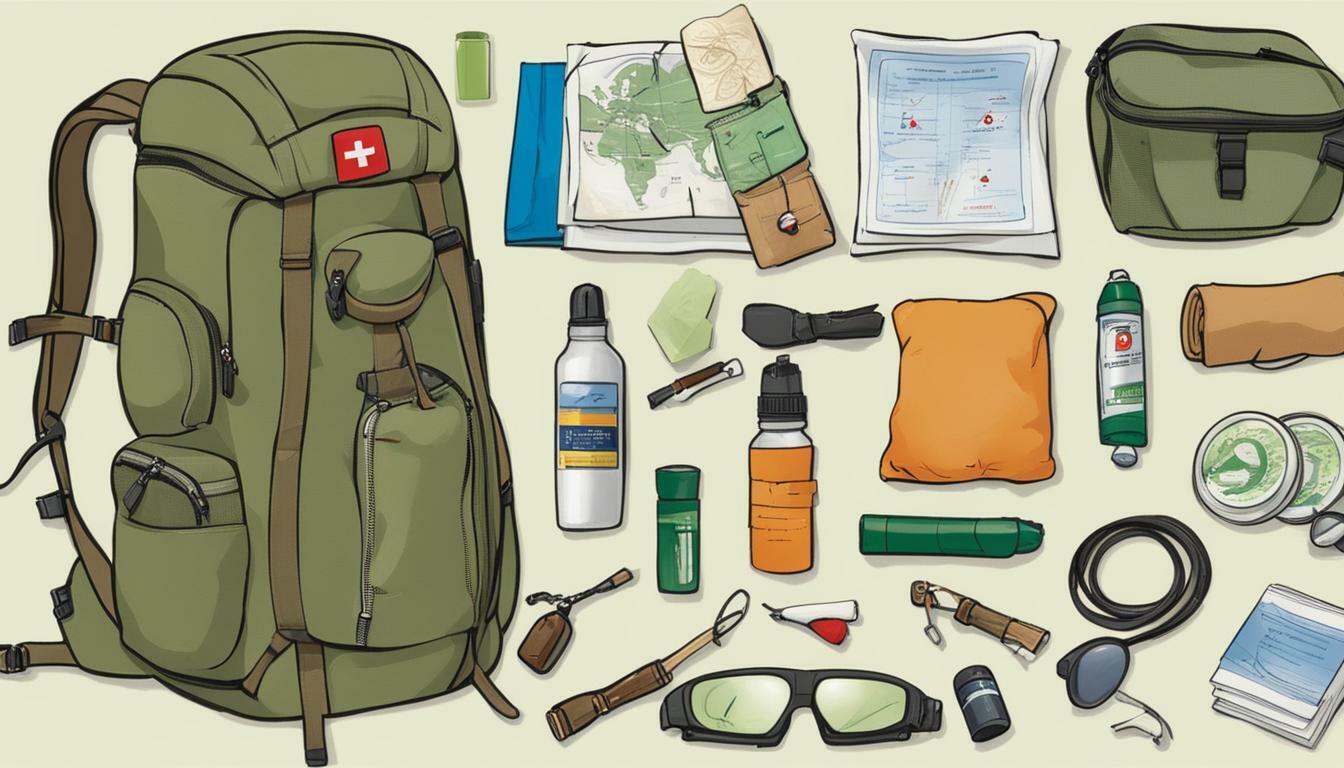As a birdwatcher, it’s crucial to have a first aid kit specifically designed for your needs. Spending time in nature exposes you to potential risks and hazards, making it essential to prioritize your safety while observing birds.
Having a well-equipped first aid kit on hand can ensure that you’re prepared for any unforeseen accidents or injuries that may occur during your birdwatching trips. A birdwatching first aid kit should be tailored to address the most common injuries or ailments that birdwatchers may encounter.
Whether it’s a minor cut, insect bite, or sprain, having the appropriate supplies, such as bandages, antiseptics, and insect repellent, can help alleviate discomfort and prevent further complications.
By investing in a first aid kit and familiarizing yourself with basic first aid skills, you can better enjoy your birdwatching experiences while also ensuring your safety. Keep reading to learn more about the essential items that should be included in a birdwatching first aid kit and how to choose the right one for your needs.
The Importance of Nature Observation Safety
Birdwatching is an activity enjoyed by many nature enthusiasts across the UK. While it can be a peaceful and rewarding experience, it is important to prioritise safety.
Nature observation safety is crucial to ensure that birdwatchers can enjoy their hobby without putting themselves in harm’s way. This is where birdwatching safety equipment comes into play.
There are potential risks and hazards that birdwatchers may encounter while observing birds in the wild. These can range from slipping on muddy terrain to being stung by insects. In order to minimise these risks, it is essential to have the appropriate safety equipment.
Investing in birdwatching safety equipment such as sturdy footwear, hats, and sunscreen can greatly enhance the overall safety and comfort of birdwatching expeditions. Additionally, carrying a well-equipped first aid kit can help birdwatchers be prepared for any emergencies that arise, ensuring they can respond promptly to any potential injuries.
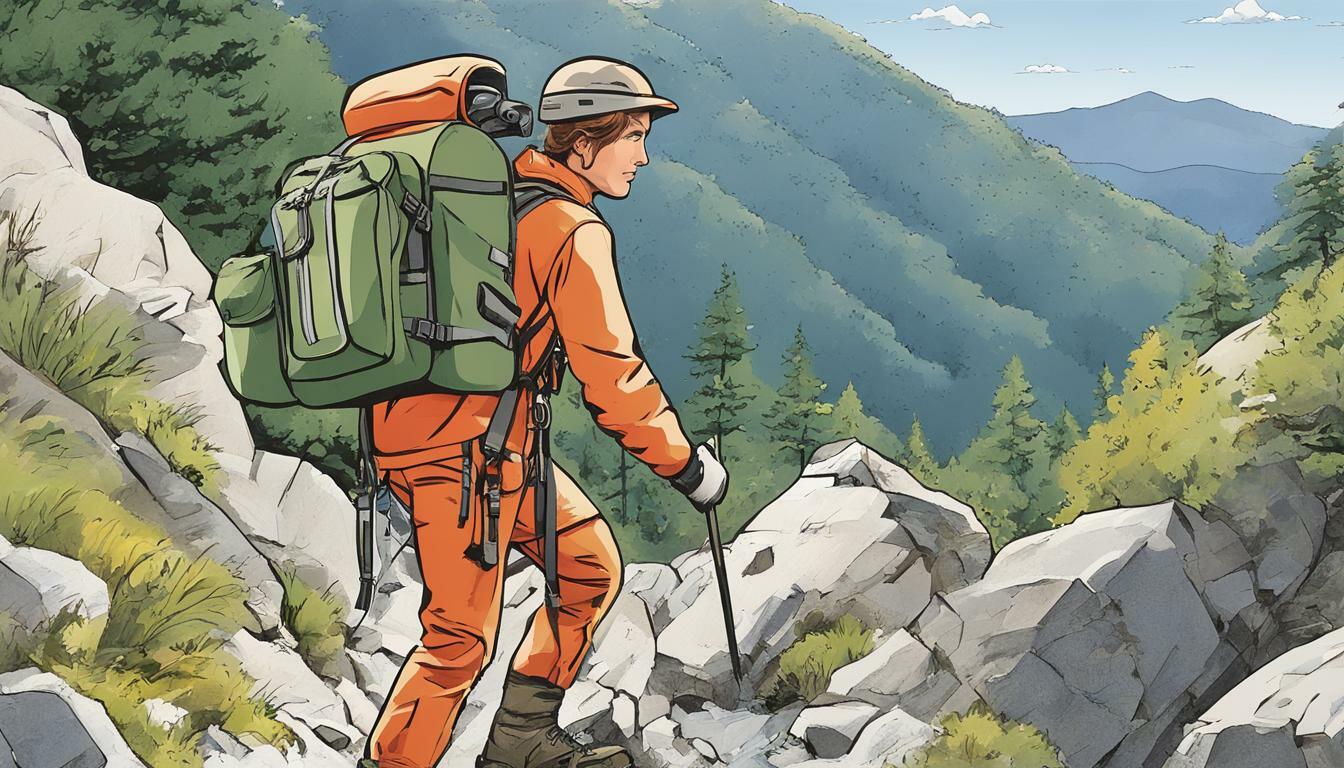
By prioritising nature observation safety and investing in the proper safety equipment, birdwatchers can fully enjoy their birding experiences while minimising potential risks and hazards.
Choosing the Right First Aid Kit for Birdwatching
When it comes to birdwatching emergency kits, it is important to select the right one for your needs. Choosing the appropriate first aid essentials can help ensure that you are well-prepared for any potential accidents or injuries while observing birds in the wild.
Before purchasing a birding first aid kit, it is essential to consider the activities you will be engaging in and the potential risks that may be associated with them. For instance, if you are heading out for a long hike, you may need a kit that includes outdoor first aid supplies such as blister treatments, insect repellent, and sunscreen.
On the other hand, if you are planning on going on a birdwatching excursion with a larger group, you may want to opt for a more comprehensive kit that includes a greater range of medical supplies as well as emergency items such as a whistle or signal mirror.
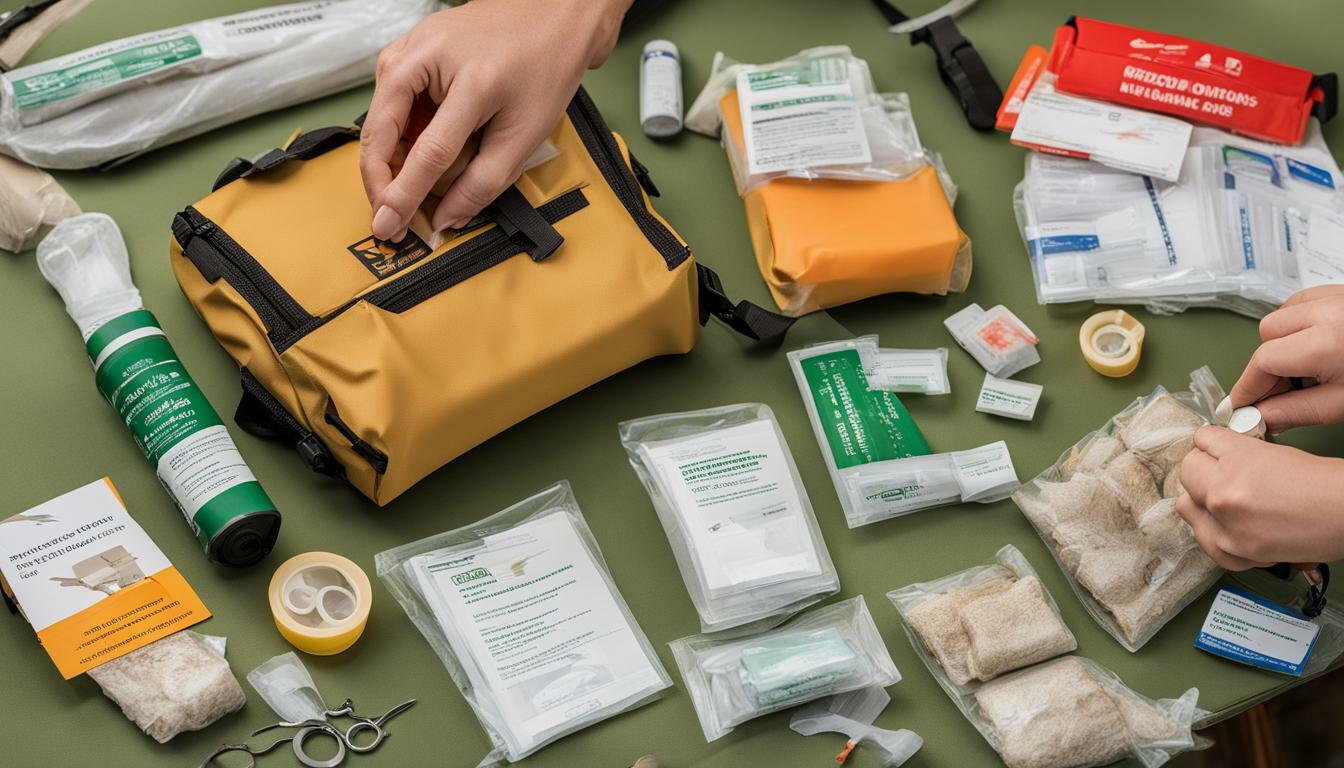
It is important to note that while some kits may come with a variety of items, not all items may be necessary for your particular birdwatching activity. For this reason, it is advisable to assess your individual needs and ensure that the kit you choose is tailored to your specific requirements.
When selecting a birdwatching emergency kit, also consider the size and portability of the kit. Kits that are too bulky or heavy may be difficult to carry around, hindering accessibility to essential items during emergencies. A waist pack or backpack that can easily store the kit and be carried around with ease is a great option.
Finally, consider the quality of the first aid supplies when selecting your kit. Be sure to choose a kit that includes items that are up-to-date and high-quality, and remember to regularly check and restock your kit to ensure that all items remain functional and effective.
Essential Items for Birdwatching First Aid Kits
When going birdwatching, it is essential to carry an outdoor first aid kit to ensure you are prepared for any potential accidents or injuries. A basic first aid kit should include bandages, antiseptics, and medications for common ailments such as allergies and pain.
For birdwatching emergency preparedness, it is also recommended to carry insect repellent, sunscreen, and a whistle to signal for help. Insect bites and sunburn can be common hazards while observing birds in the wild, so it is important to protect yourself from them.
Additionally, it’s essential to carry a pair of tweezers to remove any ticks or splinters, a cold compress for sprains, and sterile gauze pads in case of bleeding. You should also include any personal medication if needed, such as an inhaler or EpiPen.
Having a well-stocked birding first aid kit can make all the difference in an emergency. Remember to regularly check and restock your kit, ensuring all supplies are up-to-date and replenished.
Don’t forget that the contents of your kit may vary depending on the location and season you are birdwatching in. Wilderness areas may require additional supplies, such as a snakebite kit or a tourniquet, so always do your research and prepare accordingly.
Outdoor first aid supplies for birdwatching emergency preparedness:
| Essential Items | Additional Items |
|---|---|
| Bandages | Insect repellent |
| Antiseptics | Sunscreen |
| Inhaler or EpiPen (if needed) | Cold compress |
| Tweezers | Sterile gauze pads |
| Pain medication | A whistle to signal for help |

Additional Safety Gear for Birdwatchers
Aside from having a fully stocked first aid kit, birdwatchers should also invest in additional safety gear to enhance their overall wildlife observation safety. Here are some items to consider:
- Sturdy Footwear: A comfortable and sturdy pair of boots or closed-toe shoes can protect your feet from sharp objects and insects while walking through nature trails or rocky terrain.
- Hat: A wide-brimmed hat can not only protect your face from the sun but also help to keep insects and leaves out of your hair.
- Sunscreen: Protecting your skin from the sun’s harmful UV rays is important, especially during prolonged exposure while birdwatching.
- Binocular Straps: A comfortable and adjustable strap can distribute the weight of your binoculars evenly, reducing strain on your neck and shoulders.
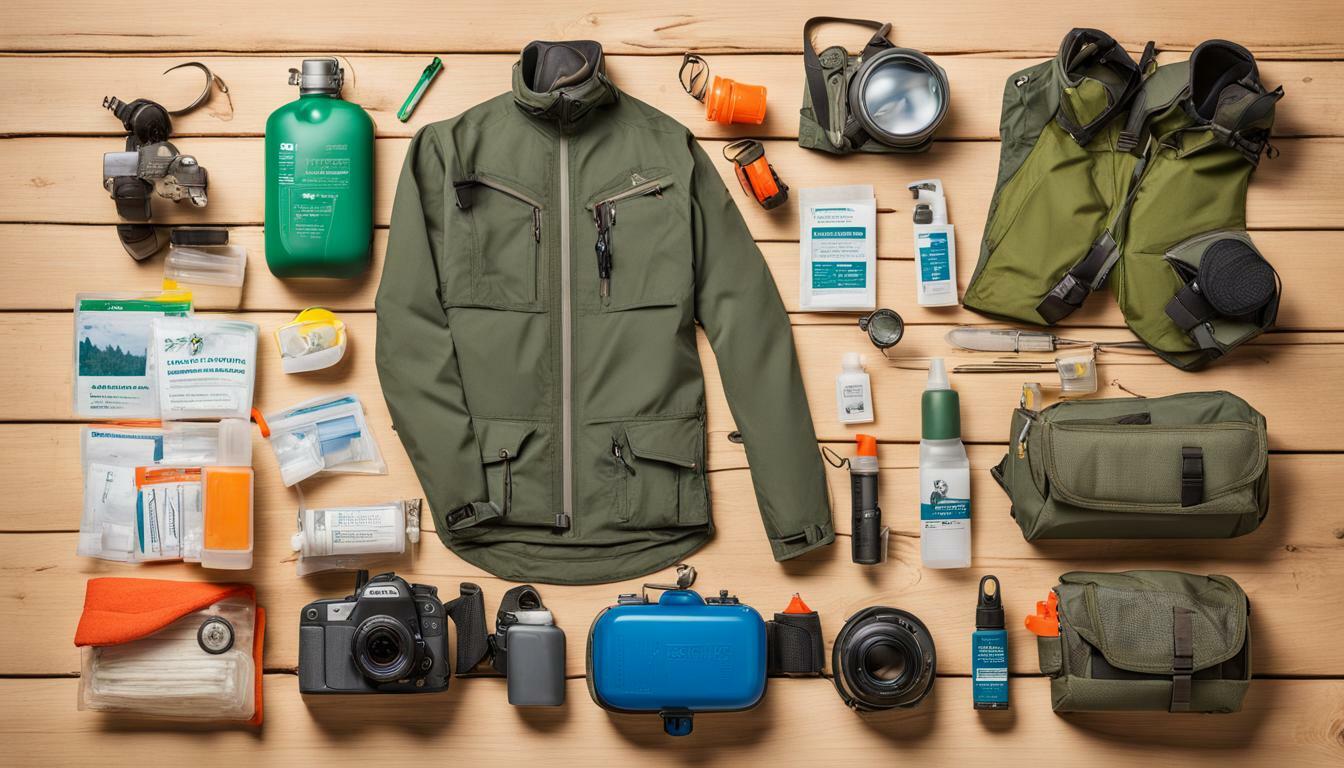
“Remember, prevention is always better than a cure. Investing in proper safety gear can greatly reduce the risk of injuries or accidents during birdwatching.”
Basic First Aid Skills for Birdwatchers
Birdwatching is a relaxing and enjoyable hobby, but it also involves a certain degree of risk. Whether you’re hiking through challenging terrain or dealing with unpredictable weather conditions, accidents can happen. Being prepared with basic first aid skills can make a significant difference in an emergency situation.
One of the most common injuries that birdwatchers may face is cuts and scrapes. If you or someone you’re with experiences a minor cut or abrasion, the first step is to clean the wound thoroughly with soap and water. Apply a sterile bandage or dressing to prevent infection and promote healing.
Insect bites and stings are also common when spending time outdoors. To reduce swelling and alleviate symptoms, you can apply an ice pack or a cold compress to the affected area. If you have any insect repellent in your first aid kit, use it to prevent further bites.
Additionally, sprains and strains are a possibility when walking on uneven terrain or navigating difficult trails. If someone experiences a sprain or strain in the ankle or wrist, the R.I.C.E method can be helpful: Rest, Ice, Compression, and Elevation. Rest the affected area, apply an ice pack, wrap the joint with a bandage or elastic wrap, and elevate it to minimize swelling.
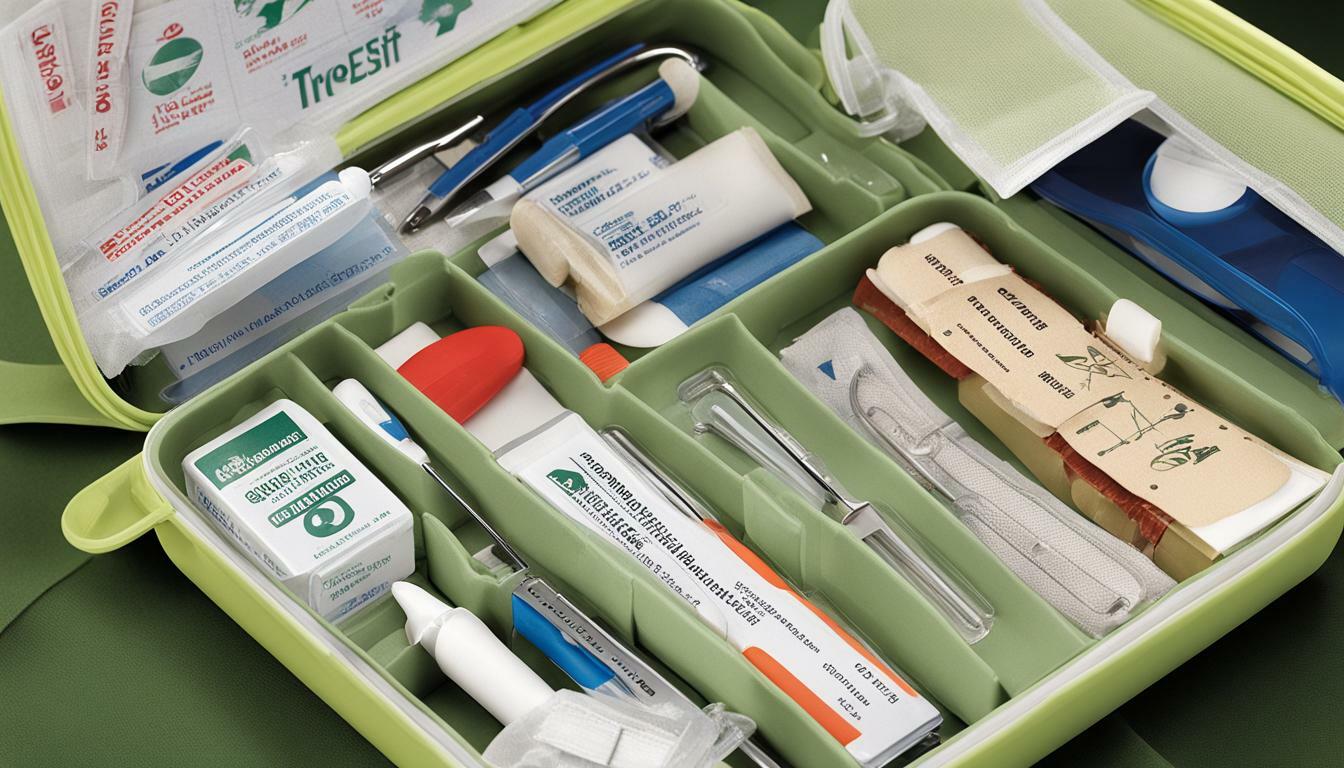
Other items to consider including in your first aid kit are antiseptic wipes, pain relievers, and tweezers for removing splinters or ticks. By having these items on hand and familiarizing yourself with basic first aid skills, you can respond confidently and effectively in the event of an emergency.
Preparing for Emergencies in Birdwatching
As with any outdoor activity, it is essential to be well-prepared for any potential emergencies that may arise while birdwatching. Developing an emergency action plan and carrying a well-stocked first aid kit is crucial to ensure a safe and enjoyable birding experience.
When creating an emergency action plan, it is essential to consider communication methods and emergency contact information. Ensure that you have a reliable means of communication, whether it be a cell phone or a two-way radio. Have a clear understanding of how to access emergency services in the area, including the local emergency number and the nearest medical facilities.
It is also essential to communicate your emergency action plan with your birdwatching group or partner. Ensure that everyone is aware of the plan and knows how to access emergency services in case of an emergency.
Carrying a first aid kit is crucial for any birdwatching expedition. A well-stocked kit should include a variety of items, including bandages, antiseptics, insect repellent, and any necessary medications. It is important to regularly check and restock your first aid kit to ensure that all supplies are up-to-date and ready for use in case of an emergency.
Additionally, knowing basic first aid skills can be invaluable while birdwatching. Familiarize yourself with procedures for addressing minor cuts, sprains, and insect bites, enabling you to effectively handle common nature-related injuries. Consider receiving first aid training to gain more advanced skills and confidence in handling emergencies.

By prioritizing safety and being well-prepared for emergencies, birdwatchers can fully enjoy the beauty of nature observation without compromising their well-being. Remember to always respect wildlife and the environment while birdwatching, adhering to responsible and ethical practices.
Carrying Your First Aid Kit
Once you have prepared your first aid kit, it’s essential to have it with you wherever you go. When birdwatching, it’s best to have a kit that is easily accessible and doesn’t add unnecessary weight to your gear.
Consider investing in a waist pack or backpack specifically designed for outdoor activities. These packs should have several compartments for storing your first aid kit and other essentials such as water bottles and snacks.
Make sure the pack fits comfortably and doesn’t hinder your movement or cause discomfort during long walks. You want to ensure that you have everything you need without being weighed down by unnecessary items.

Importance of Regularly Checking and Restocking Your Kit
Keeping your first aid kit up-to-date and well-stocked is crucial for birdwatching emergency preparedness. Regularly checking and restocking your kit ensures that you have the necessary supplies to handle any potential accidents or injuries that may occur while observing birds in the wild.
First and foremost, you should always ensure that your first aid kit is equipped with all of the essential items needed for birdwatching emergencies. These items includes bandages, antiseptic wipes, pain relievers, insect repellent, and any medications you may need for preexisting conditions.
It is also important that you check the expiry dates of all items in your first aid kit, as well as any specific storage instructions, and discard any that are out of date or expired. This will help to ensure that your supplies are effective when you need them most.
Furthermore, it is a good idea to keep a detailed inventory of the items in your kit so that you know exactly what you have on hand and what needs to be restocked. This will prevent any last-minute surprises and will help you replace any necessary items well in advance.
Regularly checking and restocking your first aid kit is also an opportunity to update any supplies or equipment to better suit your needs. For example, you may want to replace older items with newer, more advanced versions or invest in additional safety gear such as a whistle or a signalling mirror.
By making sure your first aid kit is always well-stocked and up-to-date, you will be better prepared for any emergencies that may arise while birdwatching. This will give you the confidence to fully enjoy your birdwatching experiences, knowing that your safety is always a top priority.
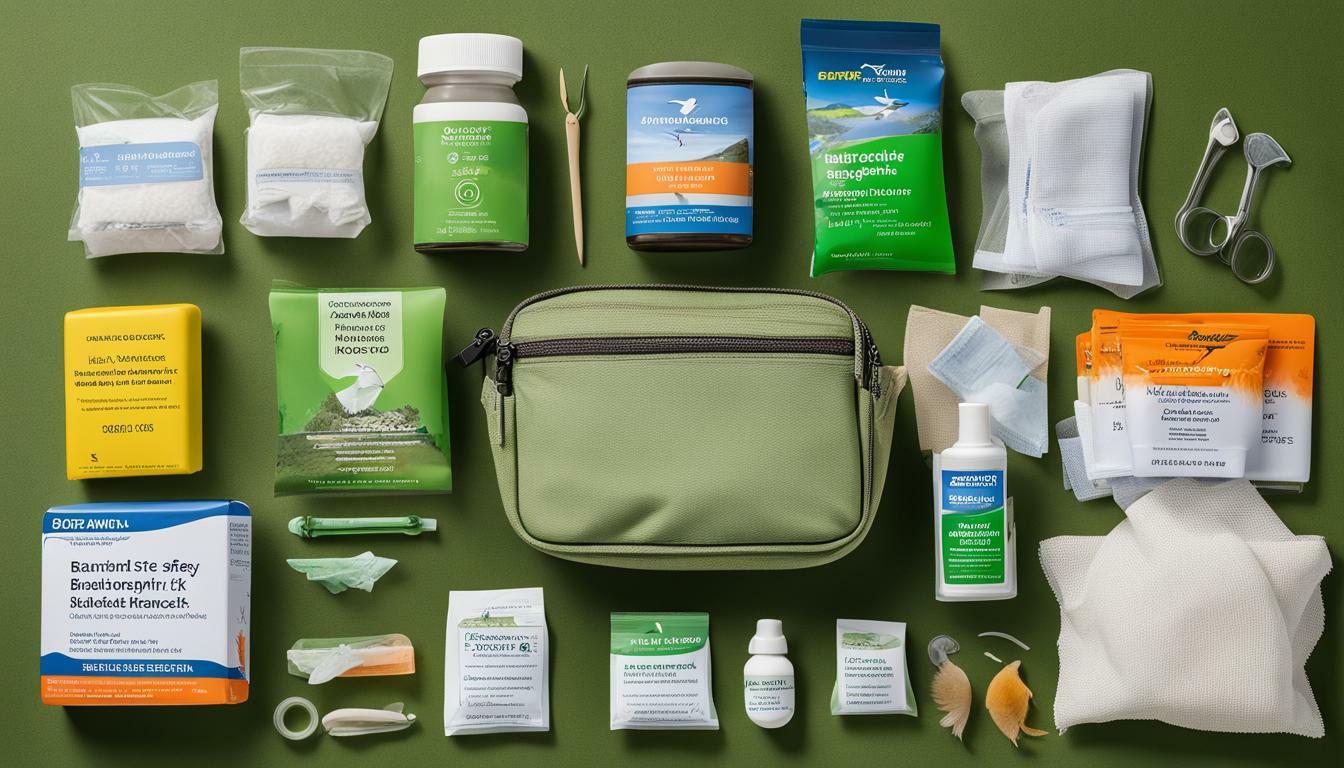
First Aid Training for Birdwatchers
While having a well-stocked first aid kit is essential for birdwatching safety, it is equally important to have the skills and knowledge to properly use the supplies. First aid training is highly recommended for birdwatchers who want to be prepared for any potential emergencies in the field.
There are various training options available, ranging from basic first aid courses to more specialized wilderness and nature observation safety training. These courses cover topics such as wound care, CPR, and treating injuries caused by wildlife and outdoor activities.
By completing first aid training, birdwatchers can confidently handle emergencies and potentially save lives. They can also learn valuable prevention techniques, such as avoiding hazardous situations and properly assessing risks. Ultimately, first aid training enhances birdwatching safety and overall nature observation experiences.
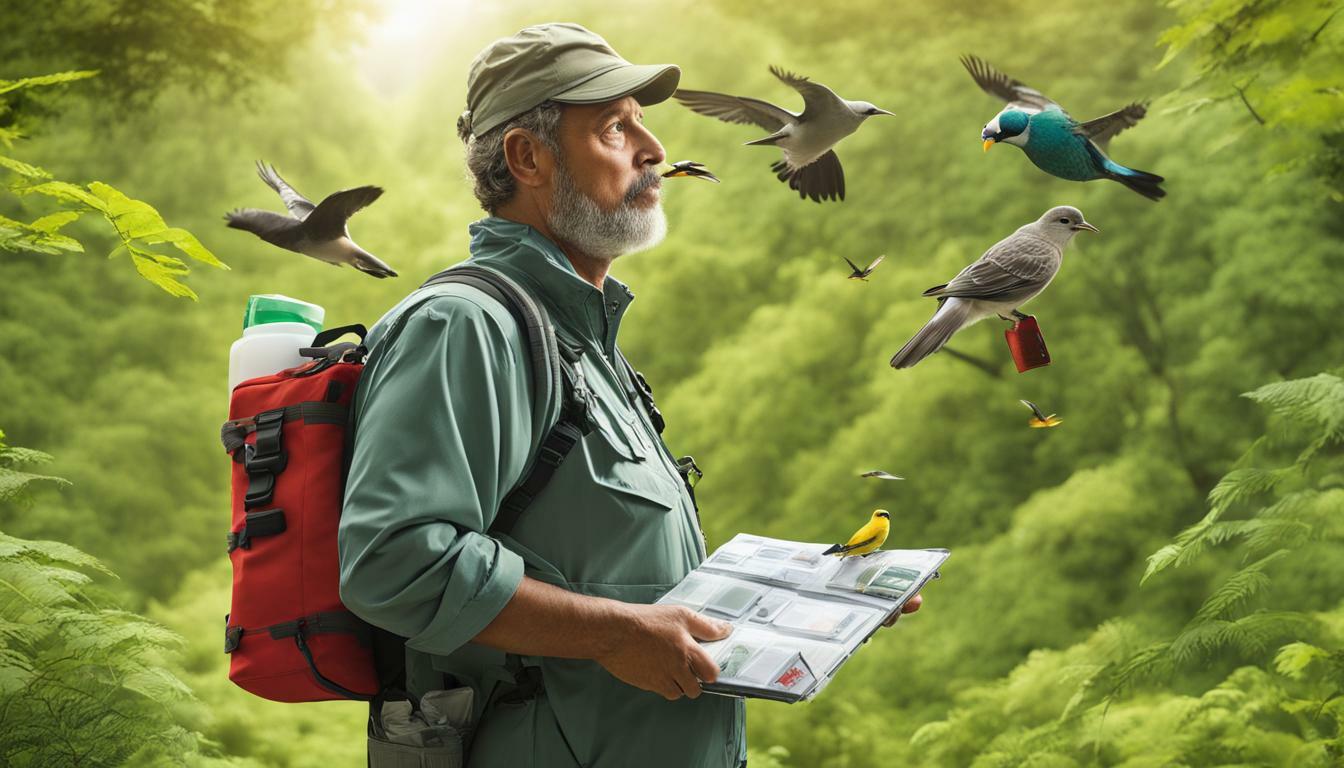
“By completing first aid training, birdwatchers can confidently handle emergencies and potentially save lives.”
Staying Safe and Enjoying Birdwatching
While birdwatching is a delightful hobby, it is important to prioritize safety while observing nature. By taking precautions and investing in the right safety equipment, birdwatchers can ensure their well-being during their birding escapades.
Nature observation safety is crucial, so make sure to wear appropriate clothing such as sturdy footwear, hats and sunscreen. Investing in birdwatching safety equipment such as binocular straps and a first aid kit is also highly recommended.
Respecting wildlife is also a must. Do not disturb the natural habitat of the birds, and avoid getting too close to their nests or young ones. By staying at a safe distance, birdwatchers can enjoy observing these beautiful creatures without harming them or themselves.
Remember, birdwatching involves venturing into the great outdoors, and it’s important to always be mindful of the potential hazards and risks that may arise. With proper preparation, safety gear, and basic knowledge of first aid, birdwatchers can fully enjoy their nature observation experiences.
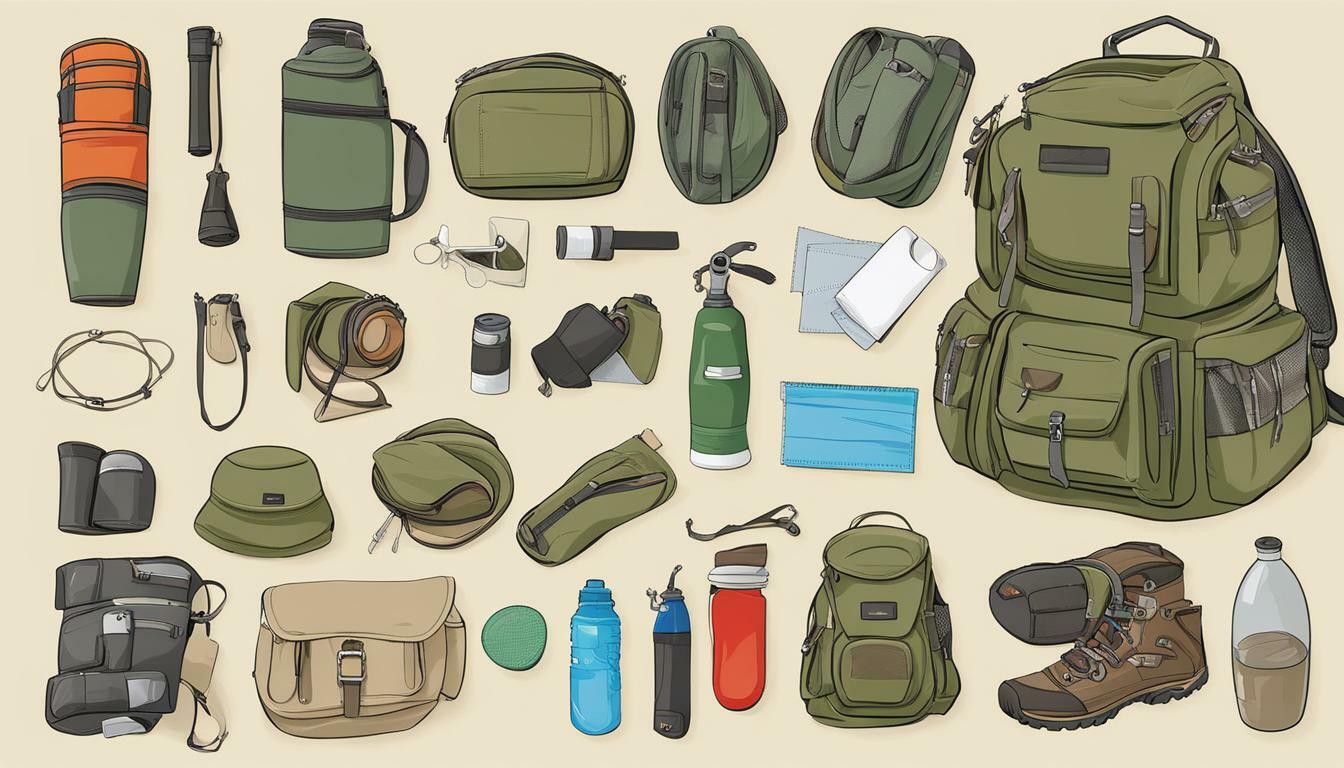
Conclusion
As a birdwatcher, safety should always be a top priority when exploring nature. It is essential to have a well-equipped first aid kit specifically designed for birdwatching, with all the necessary items to address common injuries or ailments that may occur.
Investing in additional safety gear such as sturdy footwear, hats, and sunscreen can enhance overall safety and comfort during birdwatching expeditions.
Basic first aid skills are also crucial for birdwatchers to be familiar with, such as treating minor cuts, sprains, and insect bites. Regularly checking and restocking your first aid kit is also essential to ensure all supplies are up-to-date and replenished.
Engaging in first aid training can empower birdwatchers to confidently handle emergencies and potentially save lives. By following the guidelines provided in this article and being prepared for potential emergencies, birdwatchers can fully enjoy their birding experiences while prioritizing their well-being and respecting wildlife.
